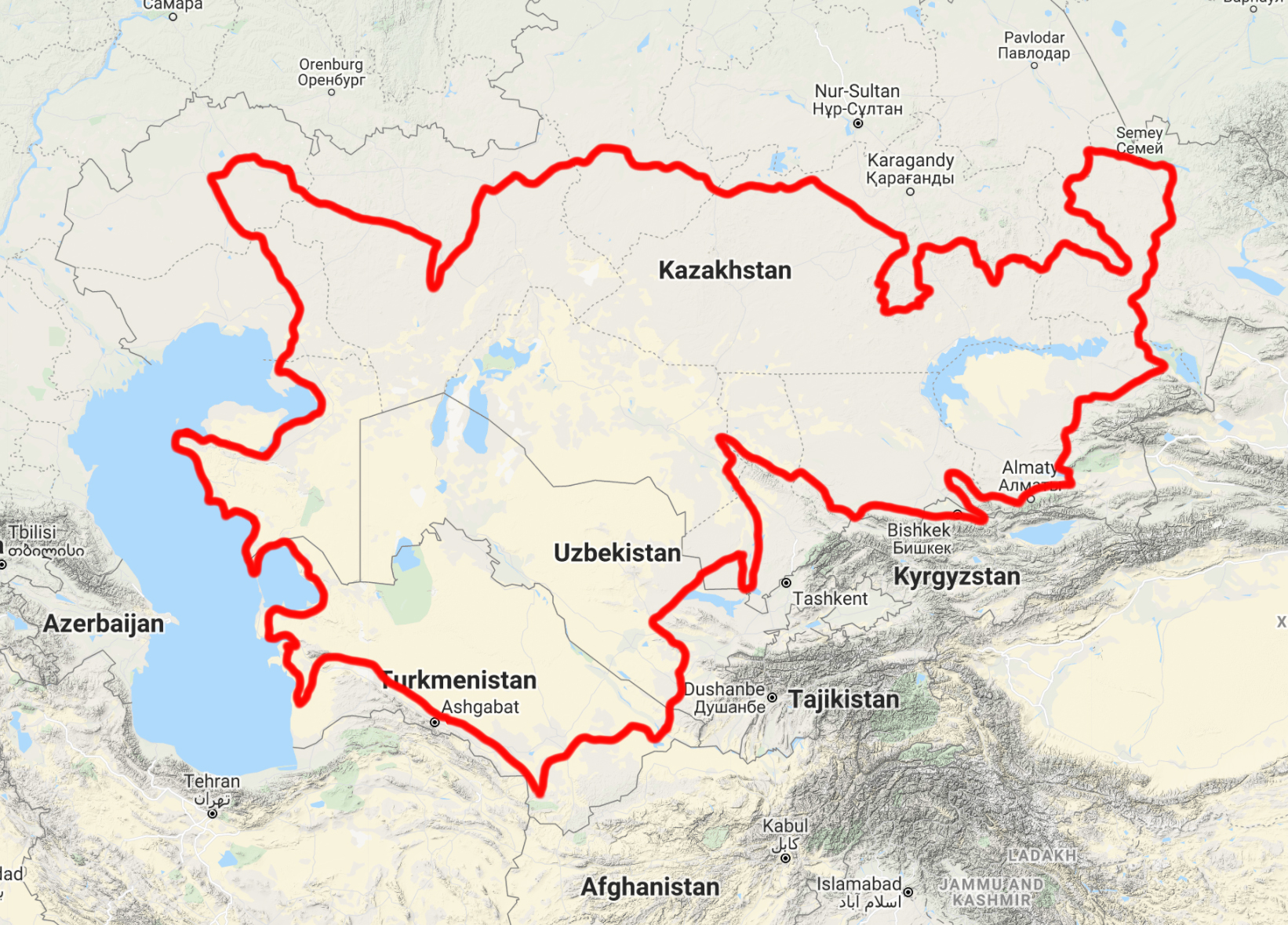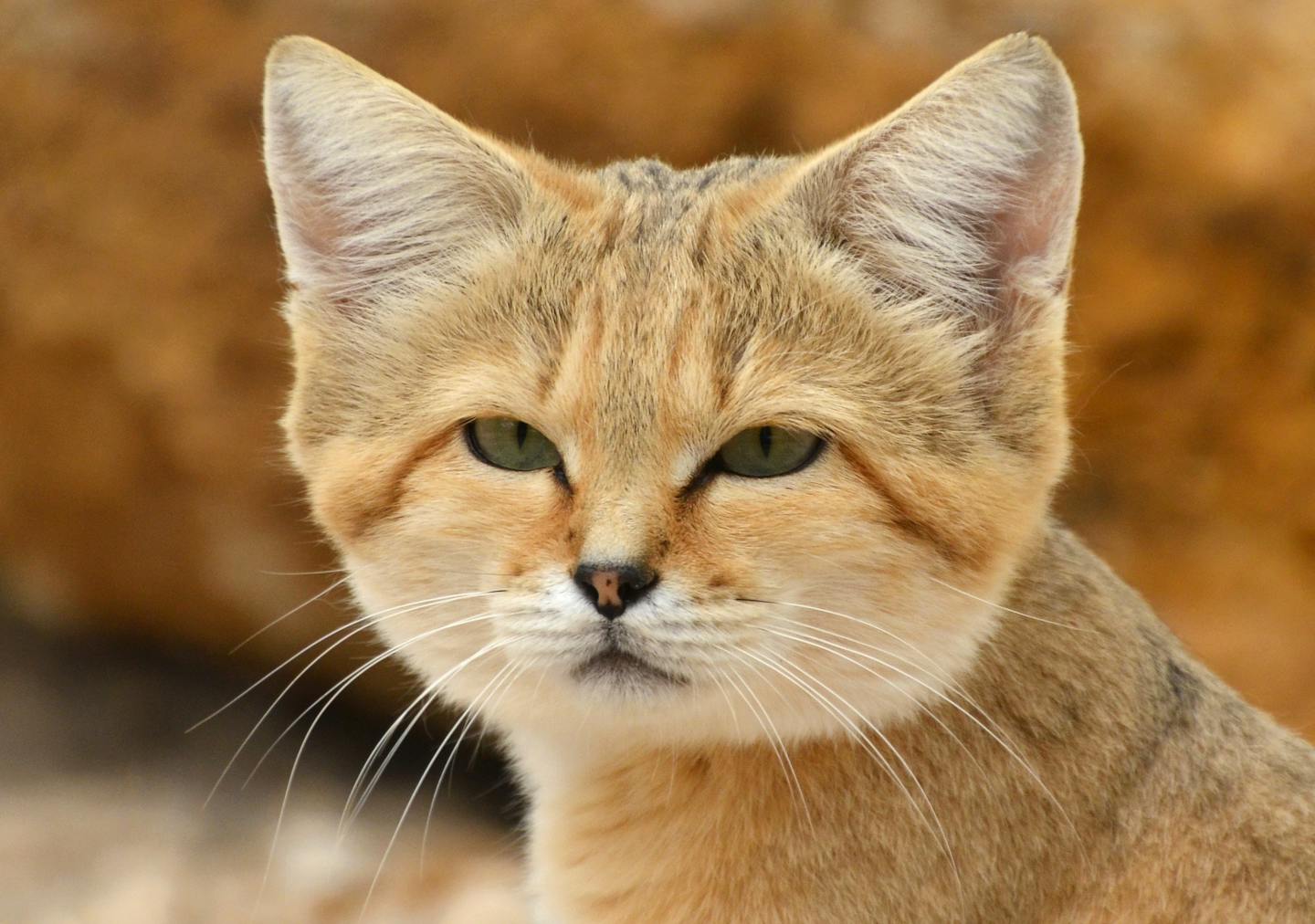Sand cats: the cute, but fierce felines hunting viper snakes
Our “Species of the Week” series highlights the flagship species of each of the 844 unique ecoregions contained within Earth’s bioregions.
And the cutest cat award goes to… the sand cat! Found throughout Africa's Sahara desert, the Arabian peninsula, and in parts of central Asia including Turkmenistan, Iran, Pakistan and Afghanistan, this little guy only grows to about 18 to 22.5 inches (about one and a half to two feet, ), and a body weight between 3 to 7.5 pounds. Its tail makes up nearly half of its head to body length, measuring between 11 and 14 inches.

The sand cat is the flagship species of the Central Asian Southern Desert ecoregion, located in the Central Asian Deserts & Riparian Woodlands (PA32) bioregion.
With a pale sandy-brown coat, which is almost snow white at the belly, and dustier on top, black stripes on its legs, and rings on its black-tipped tail, the sand cat is well-suited to the desert. In fact, it's the only felid to occur exclusively in a desert habitat.
Sand cats are primarily nocturnal and prefer an arid habitat with little vegetation. They inhabit dry plains and rocky valleys where surface temperatures can reach 124 degrees Fahrenheit during the daytime, dropping to as low as 31 degrees Fahrenheit at night. When temps become too extreme, the sand cat will retreat to cooler burrows. Burrowing and digging in sand is a primary past-time, along with hunting.
They eat primarily small rodents, but when the preferred prey is scarce, they’ll occasionally feed on hares, birds, spiders, insects and reptiles, eating whatever they can find in their desolate habitat. Sand cats are notorious snake hunters, particularly of horned and sand vipers, which they stun with rapid blows to the head before sinking the kill with a neck bite.
Their enhanced sense of hearing allows them to detect a a potential meal burrowing underneath the ground. They’ll then dig rapidly to capture the prey, and is known to cover its kill, returning later to feed.
Sand cats can survive without drinking water for weeks at a time, obtaining any moisture they need from their prey. They’ve been recorded moving long distances in a single night. In Morocco, one male travelled more than 14 km in a straight line in less than 30 hours.
Females give birth to a litter of one to eight kittens, although two to four is most common. The kittens, which weigh just over one ounce at birth, are to-die for cute, with enormous, triangular ears standing on the tops of their heads, and tiny paws.
Their lifespan in the wild is unknown, but in human care, they’ve been known to live to 13 years.
Threatened by an illegal pet trade, as well as by traps set for livestock predators, some regions consider sand cats endangered, while the IUCN lists them as "near threatened.” In addition to laws that prohibit hunting this species, zoologists around the globe are working to make sure sand cats thrive. Through breeding programs such as that at Tel Aviv's Ramat Gan Safari, sand cat populations are slowly recovering around the world.

.png?auto=compress%2Cformat&w=200)

